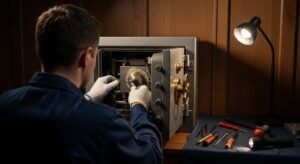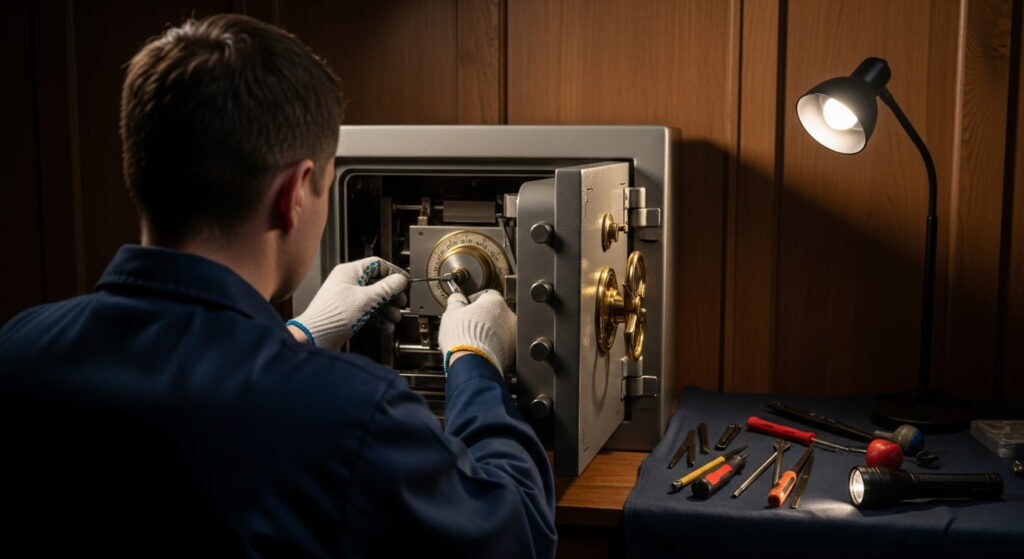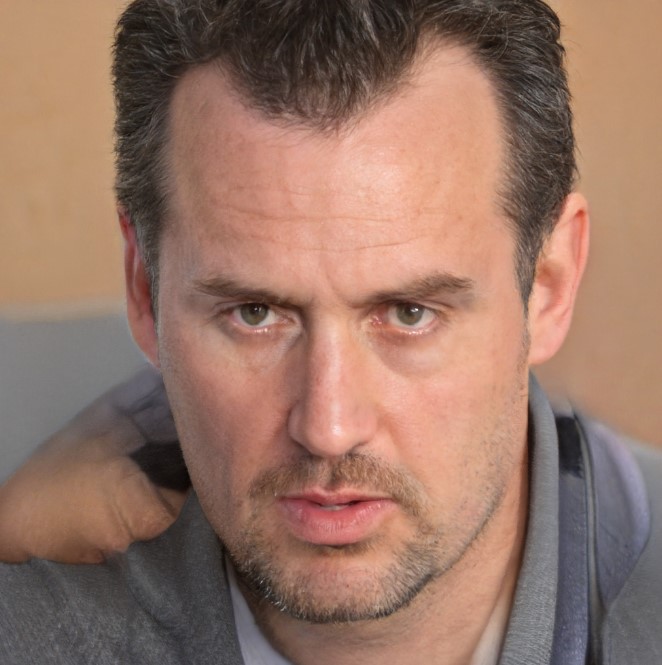

Being locked out of your own safe is never fun and can be incredibly stressful, leaving you feeling hopeless and anxious. Whether it’s an important legal document or a cash stash, the fear of damage while trying to regain access is real. The thought of potentially destroying irreplaceable family heirlooms, sensitive documents, or valuable jewelry can cause genuine panic.
But safe locksmiths in NYC have all the right tools and techniques to open safes without damaging the contents or even the safe itself in many cases.
Let’s walk through how locksmiths handle safe cracking with precision and surprisingly minimal destruction.
There are plenty of everyday reasons people lose access to their safes, and it’s a lot more common than you’d think. Common scenarios include:
A professional locksmith doesn’t walk around with a drill and a hammer, ready to attack your safe with brute force. Instead, they assess the situation carefully. This includes:
This stage is really important as it helps determine the safest, least damaging way to proceed, potentially saving you money and preserving your safe’s integrity.
If the safe isn’t severely damaged and the mechanism is accessible, locksmiths always aim for a non-destructive solution.
Common methods include:
This is a manual technique mostly used for dial safes. With a trained ear and touch, the locksmith listens and feels for clicks and subtle shifts in the dial.
Digital safes are more common in homes and offices. Sometimes they have:
Locksmiths may use tools to simulate keypad entries or reset access using safe-specific software.
When safes have key access, a locksmith may use traditional picking tools to get in. It’s surprisingly gentle when done by a professional and won’t damage internal contents or lock mechanisms. This technique requires the same precision and skill used for residential and commercial locks, adapted for the higher-security mechanisms typically found in safes.
If non-destructive methods fail, drilling becomes the next step.
The hole is later patched with epoxy, steel, or safe manufacturer repair kits. High-end safes might need a replacement panel, but most are fully repairable.
After the safe is opened, the locksmith’s job isn’t finished:
Some locksmiths offer same-day servicing for combination changes and even safe reinstallation.
Safe cracking requires legal compliance. Locksmiths will usually ask for:
Photos or videos are often taken before and after the service to protect both parties, especially when valuables are involved. This documentation helps prevent disputes and provides evidence of proper procedures.
Also Read: How Much Does It Cost to Open a Locked Safe in 2025?
Here’s what most homeowners do. They’ll call the first locksmith they find online and wonder why the service they’ve received is subpar or why they’ve been wrongfully charged.
Here’s what to look for:
You can also ask how they plan to avoid damage, and any reputable technician will explain their step-by-step approach before beginning their work.
Safe cracking in NYC is not about brute force; it’s about precision, patience, and protecting what matters most. Whether your safe is electronic or mechanical, the right locksmith can open it with care and confidence.
So, if you’re looking for safe locksmith in NYC services, you don’t have to stress about damage or lost valuables. At NYC City Safe, we specialize in non-destructive safe opening. Get in touch today, we’re here to help you open what matters most, safely!
“When my safe with many important documents in it wouldn’t open, I got anxious and googled several different ways… Left a couple messages and never heard anything back. Then I found City Safe – they came the same day. They completely fixed everything!!! City Safe rescued us! Thanks so much!”

“They completed the lock replacements and repair fast! So happy I worked with them! The price is great! Very reasonable! Will use them again in the future!”

“Responded to my call right away! Thank goodness for you guys! Didn’t know I needed repair on my locks and that they needed maintenance every now and then! They provided a professional and good value service and I got a consultation for free. Do not hesitate to work with them!”

“Got locked out of my jewelry safe, it wouldn’t open and it made so anxious! Called City Safe and I am so glad that they respond immediately! They saved the day and recommended me some maintenance methods. Beyond grateful! Highly recommend!”

“They completed my repair and maintenance so fast! Didn’t expect that! So glad I worked with experts! Very reasonable price too! Thanks guys!”

“Woah! I didn’t know my safe needed repair that’s why I got locked out! I knew I had to properly maintain it but I didn’t know how and the guys from City Safe helped me out, a lot! They provide professional and good value service! You also get a consultation for free!!! Would recommend to family and friends! ☺”

“Got so worried how to move my safe without damaging my floor! I didn’t want to pay for the damage! City Safe saved the day and helped me all throughout the entire process. Beyond grateful for this! Recommended you guys to my family and friends!”

“I planned to move out but didn’t know what to do with the safe I have. It’s large so I was not certain of the process of moving. I called City Safe and they were glad to help! So thankful for them! No damages and I was able to transfer it to a recommended area in my new place!”

“ They provide professional and good value service! You also get a consultation for free!!! Would recommend to family and friends!”

“After losing my keys right sometime recently my greatest assembly of the year, I thought it was the conclusion of the world. I looked for a Locksmith in New York and called City Secure instantly. Realizing my crisis, a locksmith arrived in less than 30 minutes and was able to grant me about quick get to my supplies. I was so inspired by the incite benefit that I called them back after my assembly to supplant the locks at my office. Predominant, incite and dependable benefit earned my trade for life!”

“Changed keys and locks again for security purposes. City Safe always sends technicians that are super knowledgeable, and most importantly, honest and reliable!”

“Clear, concise explanation of the system and provided helpful tips for its maintenance as well. Will highly recommend this team!”











Provided to all neighborhoods in New York.
We will make sure you are happy with our service
On all safes sold. City Safe provides a warranty for all service
We will ship your safe to almost every state